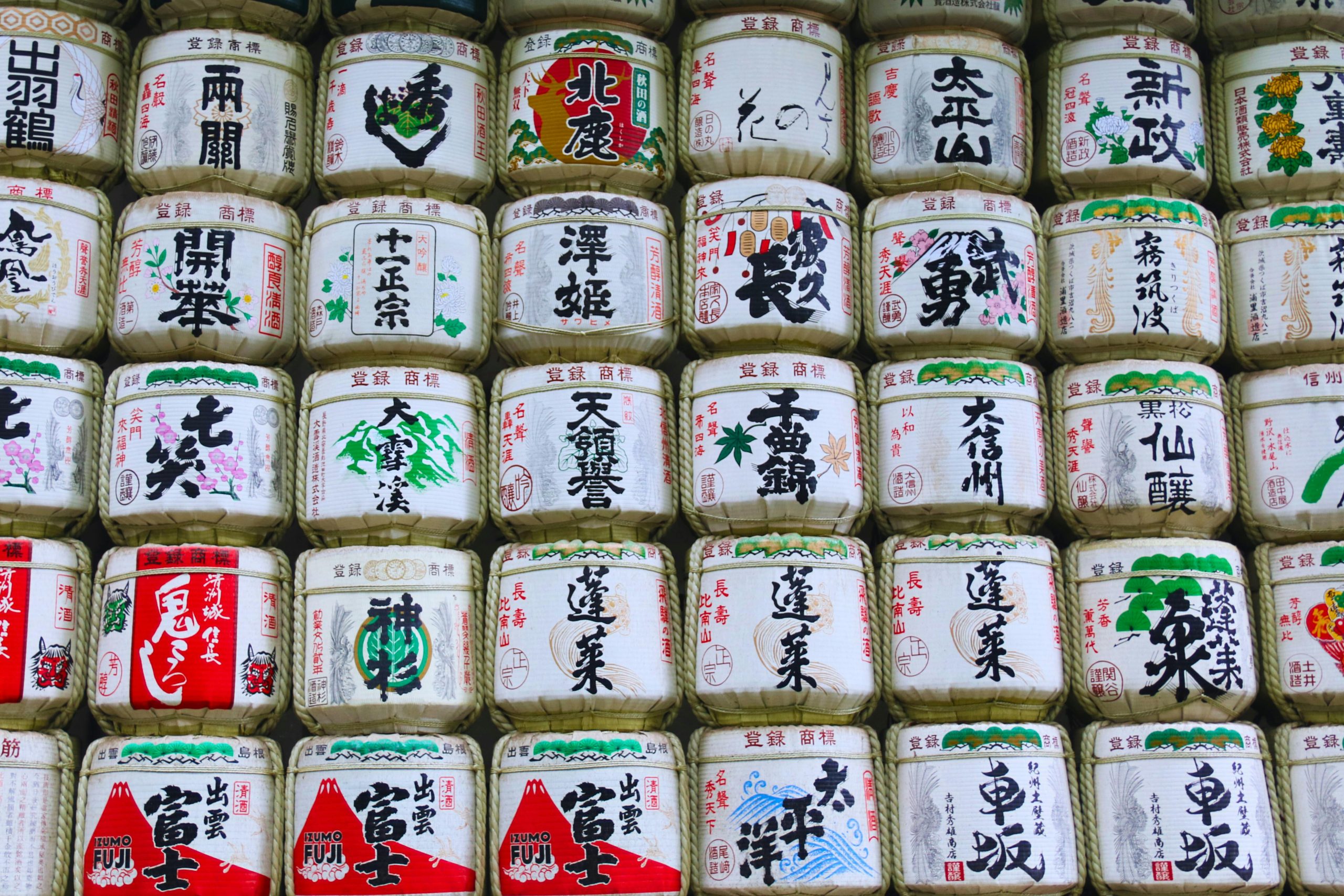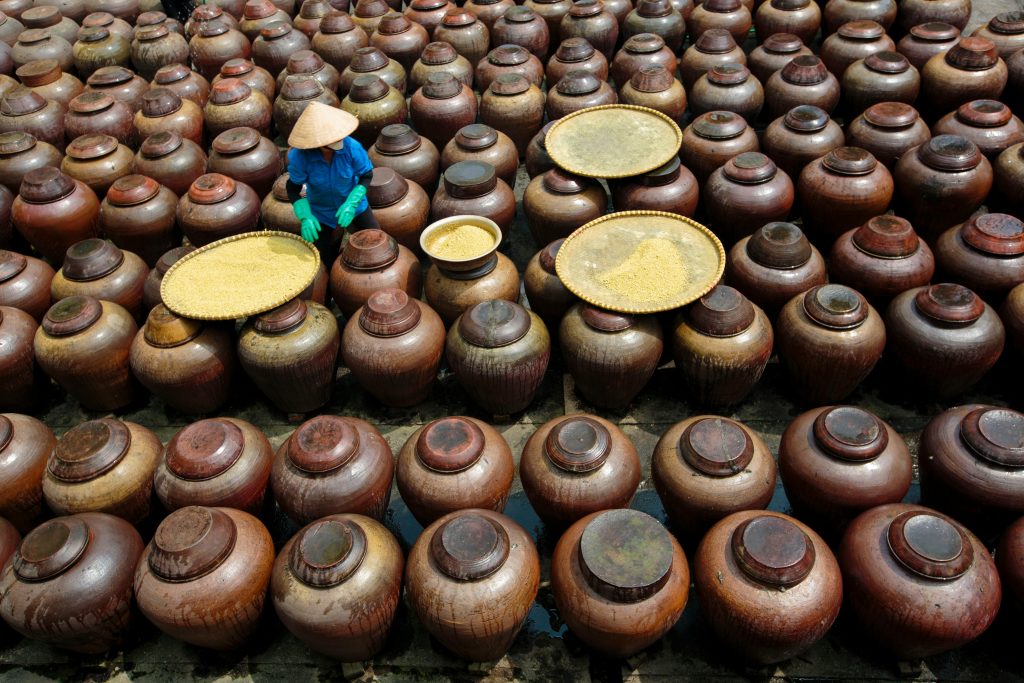
Rice wine often flies under the radar. Grape wines get all the love, and people sometimes forget about the fascinating world of fermented rice beverages. In China, rice wine—commonly known as huangjiu or “yellow wine”—holds a special place in local culture. It’s been around for centuries, and many folks still enjoy it at family dinners and festive banquets. If you’re curious about how it’s made, how long you can keep it, and what dishes it pairs well with, you’re in the right spot. Think of this article as a friendly chat about everything rice wine. So grab a seat, and let’s dive in.
1. A Quick Look at Rice Wine and Its Significance
Rice wine isn’t really a “wine” by Western standards. Technically, it’s a fermented drink that sits somewhere between beer and wine in terms of production. But in China, people have always called it jiu (酒), which is the general term for alcoholic beverages. Over the years, regions across China have developed their own unique styles, with Shaoxing wine from Zhejiang Province being one of the most famous examples.
Why Is It Called “Yellow Wine”?
Chinese rice wine often carries the nickname “yellow wine” because of its color. During fermentation, pigments from the grains and the mold starter (called qu) give the liquid a rich golden or amber hue. This hue can vary depending on how long it’s aged and the brewing techniques involved.
Also, people enjoy this beverage in many different ways. Sometimes they drink it warm, sometimes chilled, and sometimes they even use it in cooking. If you’re someone who loves exploring different drinking traditions, you might also enjoy reading about Wine Etiquette in Chinese Social Settings—it gives you the scoop on raising a glass in a culturally respectful manner.

2. Brief History: From Ancient Rituals to Modern Tables
Rice wine has a long story in Chinese culture. Historical records suggest that ancient Chinese civilizations brewed and consumed fermented grains over 3,000 years ago. Archaeologists have found old pottery vessels with residues hinting at the presence of alcohol from rice.
Over time, rice wine became an essential part of traditional ceremonies, religious rituals, and royal banquets. Emperors sipped it during grand feasts, and common folk enjoyed simpler versions at home. Today, it remains a go-to choice for many regional Chinese cuisines, especially in cooking. Chefs often use Shaoxing wine to enhance the flavor of braised dishes, stir-fries, or marinades. But beyond the kitchen, people love to drink it straight—sometimes warmed up in a small clay pot, sometimes chilled in a wine glass.
3. How Is Rice Wine Made?
You might wonder what makes rice wine so distinct. Let’s break down the basics of its production.
- Steaming the Rice: Most brewers start with polished glutinous rice (sticky rice). They rinse it, soak it, and then steam it until it’s just right—soft but not mushy.
- Cooling and Inoculating: After steaming, the rice cools. Then, brewers add a fermentation starter called qu (or jiuqu). This starter usually contains molds (often Aspergillus oryzae), yeasts, and bacteria. It might look like a small brick or powder, depending on the regional style.
- Primary Fermentation: The mixture of rice and starter sits in large vats or earthenware jars. Over time, the molds break down the rice starches into sugars, and the yeast converts those sugars into alcohol. This phase can last anywhere from a few weeks to several months.
- Pressing and Filtering: Once the rice mash has fermented, brewers strain or press out the liquid. This raw rice wine goes through filtration to remove solids.
- Aging: Some rice wines are sold young and fresh, while others age for months or even years in sealed containers. Aging can deepen the color and develop more complex flavors.
- Bottling: Finally, the wine is bottled. Depending on the producer, the bottling might involve pasteurization or additional filtering. Each step can influence the final taste, aroma, and clarity of the product.
4. How Long Is Rice Wine Good For?
If you’ve ever picked up a bottle of Shaoxing wine or another variety at an Asian grocery store, you might wonder how long it stays fresh once opened.
- Unopened Bottles: High-quality rice wines, especially those aged and sealed properly, can last for years. Some say the flavor might even improve over time, similar to certain grape wines. If you store the bottle in a cool, dark place, it should maintain its quality for a good while.
- Opened Bottles: After you crack open a bottle, things change. Oxygen starts interacting with the liquid, slowly altering its taste and aroma. Generally, you can keep an opened bottle in the fridge for about three to six months. That’s assuming you seal it tightly after each use.
- If it’s a cooking rice wine (often salted or with additives), you can usually keep it longer, but the flavor might weaken.
- If it’s a premium drinking rice wine, you’ll want to enjoy it sooner for the best taste.
- Signs It’s Gone Off: Watch for any off-smells, like vinegar or moldy notes. If it tastes strange—overly sour or musty—it’s time to let it go.
If you’re new to storing various kinds of alcoholic beverages, you’ll find a broader range of tips at The Little Cellar Wine Company. They share insights on how to store and serve different types of wines in simple, easy-to-follow articles.
5. Food Pairings: Tasty Matches with Rice Wine
So what should you eat with a glass of rice wine? Honestly, there’s no one right answer. But certain pairings bring out the best in each other. Let’s explore a few.
- Savory Braised Dishes: Think red-braised pork or soy sauce chicken. The mildly sweet, umami-rich flavors of rice wine complement the salty-sweet notes of these dishes.
- Seafood: Steamed fish with ginger and scallions can pair nicely with a lighter rice wine. The wine’s smooth texture and mild sweetness balance the delicate flavors.
- Dim Sum: Many dim sum items—like dumplings or buns—feature subtle taste profiles. A gentle sip of warm rice wine can cut through the richness of pork or shrimp fillings.
- Chinese Snacks and Small Bites: Ever had spicy peanuts or dried tofu snacks? They’re awesome with a chilled or slightly warm rice wine. The wine’s sweetness and acidity can counteract heat and salt.
- Dessert: Some sweet rice wines go well with pastries, mooncakes, or sesame balls. The sweetness doesn’t clash, and you get a layered flavor experience.

Quick Comparison Table: Common Types of Chinese Rice Wine
Here’s a handy breakdown of a few well-known rice wine styles. This table can help you decide which variety to try first.
| Type | Origin | Color | Alcohol Content | Flavor Profile |
|---|---|---|---|---|
| Shaoxing Wine | Zhejiang | Amber/Brownish | ~ 14-18% | Nutty, complex, slightly sweet, sometimes with a hint of caramel |
| Mijiu (米酒) | Various | Clear | ~ 12-20% | Sweet, light, often served warm |
| Huadiao Wine | Shaoxing area | Deep Amber | ~ 15-18% | Rich, mellow, aged flavors |
| Liaojiu (料酒) | Various | Dark Amber | ~ 15% | Primarily used for cooking; salty, savory |
| Huangjiu (黄酒) | Broadly China | Golden/Amber | ~ 10-20% | Catch-all term for “yellow wine,” can range from sweet to dry |
Note: Alcohol levels vary by brand and specific fermentation methods.
6. How to Serve and Drink Rice Wine
People enjoy rice wine in different ways. Here are a few guidelines to get you started:
- Temperature: Many prefer warming it up, especially during cooler months. Low heat can release its aroma without destroying the delicate flavors. However, some modern drinkers like it chilled, especially if the wine is lighter and sweeter. Experiment to see which temperature suits your taste.
- Glassware: Traditional Chinese cups or small ceramic bowls often accompany rice wine. But there’s no hard-and-fast rule. If you only have wine glasses at home, go ahead and use them.
- Sipping vs. Gulping: Rice wine is best sipped slowly. It packs a punch in terms of flavor and alcohol content, so savor it. If you’re in a casual setting with friends, small, frequent pours keep the drink warm or at the right temperature.
- Pairing with Toasting Culture: In Chinese banquets, people love to toast. You might find yourself raising a tiny porcelain cup to say “gān bēi!” (干杯). If you want to learn more about when and how to toast politely, you can look at Wine Etiquette in Chinese Social Settings. Although it focuses on grape wine, many of the tips apply to rice wine, too.
7. Common Questions and Misconceptions
Isn’t Rice Wine Just for Cooking?
Many folks assume rice wine is only used in the kitchen, especially in Western countries. However, the stuff you see in grocery stores labeled “cooking wine” often contains salt or additives. That’s a different product than premium drinking rice wine. High-quality versions are absolutely meant for sipping, not just splashy stir-fry duty.
Can I Age My Rice Wine Like a Fine Bordeaux?
Some can benefit from further aging, but it depends on the style. Certain well-made Shaoxing wines can develop more depth if stored properly. However, others are best consumed soon after purchase. Check with the producer or read the label for clues on aging potential.
Will Rice Wine Make Me Drunk Faster?
Rice wine’s alcohol content typically lands somewhere between beer and strong grape wine. You might feel its effects more quickly if you’re not used to it. Sip slowly and keep yourself hydrated, especially at social gatherings where multiple rounds of toasts are common.
8. Check Out This Video: “Raise a Glass to China’s Beloved Yellow Wine”
If you want a quick visual tour of the history, production, and cultural significance of Chinese rice wine, watch this short video. Sometimes, seeing (and hearing) the story makes it all click.
9. Practical Tips for Buying Rice Wine
- Read the Label: Look for terms like “Shaoxing,” “Huangjiu,” or “Huadiao.” If it says “cooking wine,” check for added salt.
- Taste Test: If possible, sample different brands and age statements. Like grape wines, each variety has its own personality.
- Storage: Keep unopened bottles in a cool, dark place, away from direct sunlight. After opening, refrigerate and use it within a few months.
- Ask Locals: If you’re traveling in China or have Chinese friends, ask for recommendations. They may point you toward a hidden gem or a family-owned brand.

10. Welcome the Richness of Rice Wine
Rice wine is more than just a drink. It’s a cultural staple that weaves into countless Chinese meals, traditions, and festive moments. If you’re a fan of exploring new flavors, you’ll likely enjoy experimenting with different varieties of huangjiu, each with its own depth and complexity. Serve it warm on a chilly night or sip it chilled on a warm day—either way, you’ll discover a beverage that’s as versatile as it is intriguing.
Feel free to share your experiences if you give rice wine a try. Are you planning to pair it with a savory pork belly dish, or do you want to warm it up alongside steamed seafood? Let your palate guide you, and don’t be afraid to improvise. Wine culture—whether we’re talking about grape wine or rice wine—grows more vibrant with every personal touch.
For more wine tips and interesting reads, check out The Little Cellar Wine Company. Our blog covers everything from etiquette to adventurous pairings, so you can build your knowledge and confidence step by step.